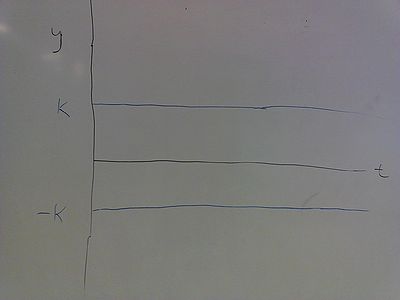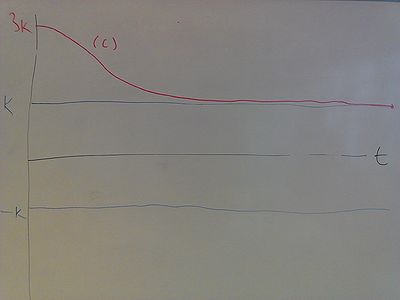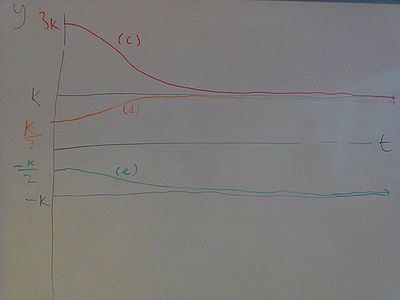Science:Math Exam Resources/Courses/MATH103/April 2012/Question 04 (f)
{{#incat:MER QGQ flag|{{#incat:MER QGH flag|{{#incat:MER QGS flag|}}}}}}
• Q1 (a) • Q1 (b) • Q1 (c) • Q1 (d) • Q1 (e) • Q1 (f) • Q1 (g) • Q2 (a) • Q2 (b) • Q2 (c) • Q2 (d) • Q2 (e) • Q2 (f) • Q3 (a) • Q3 (b) • Q4 (a) • Q4 (b) • Q4 (c) • Q4 (d) • Q4 (e) • Q4 (f) • Q5 (a) • Q5 (b) • Q5 (c) •
Question 04 (f) |
|---|
|
Consider the differential equation where is a positive constant, t ≥ 0, k > 0, but y may be positive or negative. Suppose y(0) = y0. Sketch your solutions, including those from part (a). |
|
Make sure you understand the problem fully: What is the question asking you to do? Are there specific conditions or constraints that you should take note of? How will you know if your answer is correct from your work only? Can you rephrase the question in your own words in a way that makes sense to you? |
|
If you are stuck, check the hint below. Consider it for a while. Does it give you a new idea on how to approach the problem? If so, try it! |
Hint |
|---|
|
We want to graph the solutions to the differential equation with initial conditions , , and . We know the limiting behavior of each of these cases. Use the differential equation to see where each solution is increasing and decreasing, and the fact that the solutions approach the constant solutions calculated in part a, to sketch the graphs. |
|
Checking a solution serves two purposes: helping you if, after having used the hint, you still are stuck on the problem; or if you have solved the problem and would like to check your work.
|
{{#incat:MER CT flag||
}}

















